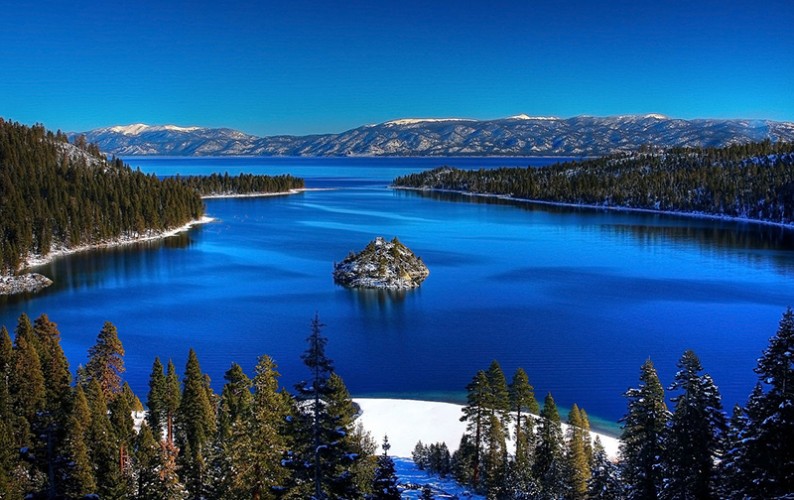Tracking natural and man-made nitrogen sources in Lake Tahoe ecosystem
 “Emerald Bay” by Michael – originally posted to Flickr as “Emerald Bay.” (Licensed under CC BY 2.0 via Wikimedia Commons.)
“Emerald Bay” by Michael – originally posted to Flickr as “Emerald Bay.” (Licensed under CC BY 2.0 via Wikimedia Commons.)A recently published study on how natural and man-made sources of nitrogen are recycled through the Lake Tahoe ecosystem provides new information on how global change may affect the iconic blue lake.
Lake Tahoe’s nitrogen concentration is one of several factors that helps maintain its crystal clear waters. To keep Tahoe blue in the future, the researchers say it’s important to keep a close eye on the nitrogen balance in the ecosystem over time.
“The things we do, as humans, affect change in nature. We know the Lake’s foodweb is changing due to warming and nitrogen inputs. Our marine and aquatic ecosystems across the globe face many of the same environmental stressors. What we’ve learned about how aquatic foodwebs recycle nitrogen in Lake Tahoe may be applicable to the clear waters near Hawai‘i,” said Stuart Goldberg, lead author of the study and post-doctoral researcher at the Center for Microbial Oceanography: Research and Education at the University of Hawai‘i at Mānoa.
The study, published in Nature Communications, tracked nitrogen, including that produced from the burning of fossil fuels, in the Lake Tahoe ecosystem. Nitrogen can affect both the productivity of lake foodwebs and the composition of the microbes that support nutrition for those food webs.
A main goal of the study was to understand how the nutrient is being cycled through the microbial food web. Goldberg compares the foodweb to a cafeteria that sends out a variety of different dining options that support the community as a whole. Nutrients like nitrogen, phosphorus and carbon come in, and the foodweb changes them into different types of nitrogen, phosphorus and carbon – proteins, sugars, and fats, for example. Some types are easier to eat than others, and are reused or eaten almost instantly. Other types, like the proteins isolated for this study, aren’t easily consumed and accumulate in the Lake.
Using radiocarbon isotope techniques, the researchers dated the molecular components of these proteins and discovered that some nitrogen was preserved in proteins and unavailable for biological consumption for 100 to 200 years.
“It is unusual for organic nitrogen to be sitting around for long periods of time in an ecosystem,” said Aluwihare. “This changes our view of how quickly nutrients are recycled in high-elevation lake ecosystems.”
The findings of this study suggest that something is preventing the efficient recycling of nitrogen in these ecosystems, and one possibility may be phosphorus limitation of the recycling bacteria (bacteria need both nitrogen and phosphorus to live).
The Lake Tahoe ecosystem is experiencing rapid change due to regional warming and shifts in precipitation patterns, as well as increased atmospheric nitrogen deposition, which has begun to alter the nutrient balance in the lake.
“This investigation has found that dissolved organic matter can store nitrogen in lake systems,” said Lina Patino, program director for the Earth Sciences Postdoctoral Fellowship Program at the National Science Foundation, which funded the research. “This result is important because to understand the environmental health of lakes, we need to know the sources of the nutrients and where they are stored.”
Goldberg and colleagues are planning to submit a grant this summer to further understand how the Lake’s foodweb processes nutrients like nitrogen and phosphorus.



